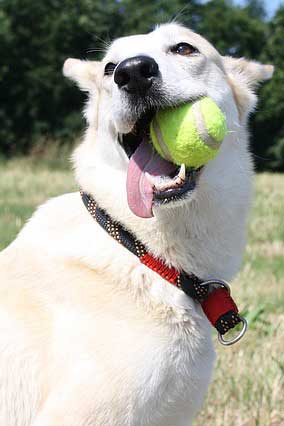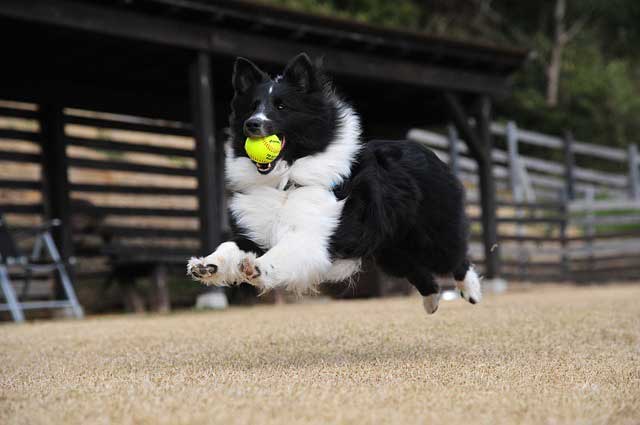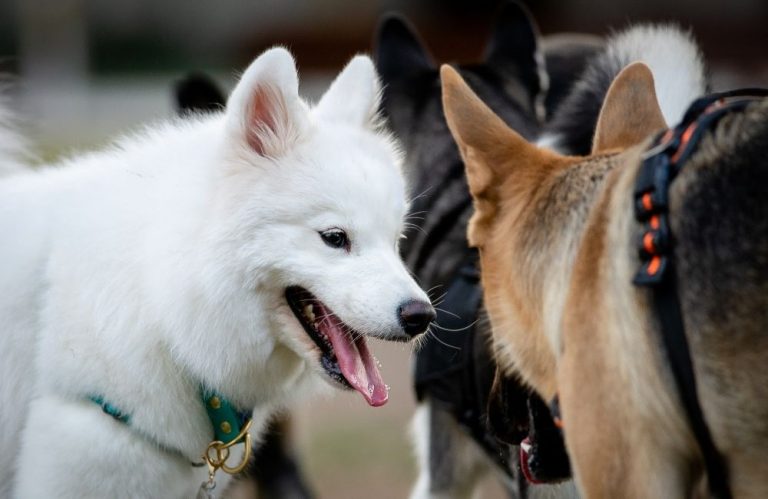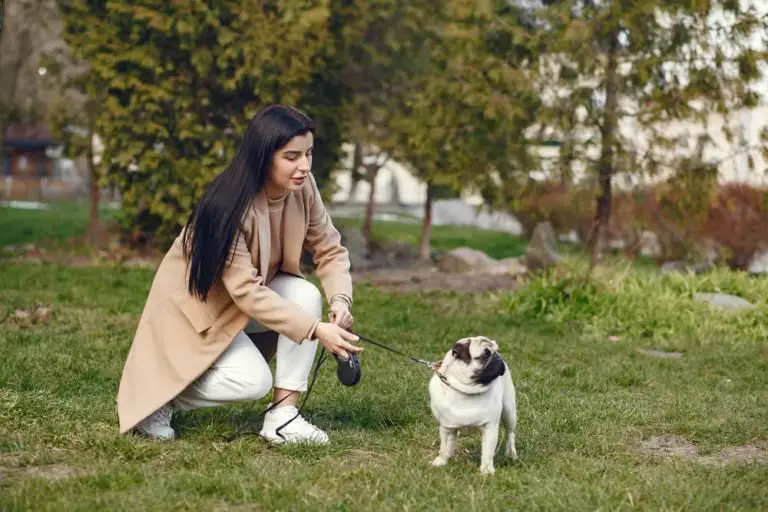Dog Won’t Fetch: What To Do When Your Dog Won’t Bring The Ball Back
Fetch remains one of the most interesting activities you can ever do with your pet. There’s something entertaining about throwing the ball (or a toy) a few meters away, sending your furbaby to retrieve it and deliver it right to your outstretched arm.
However, as straightforward as the concept seems, teaching your dog to play fetch may not run smoothly as one could expect. Although most dogs will go after the ball, only a few will bring it back to you. Some will pick the ball and run away with it while some will drop it halfway.
With that said, is there anything you can do when your dog won’t bring the ball back to you? Well, Yes— it’s possible to train any dog to play fetch. However, you will find the work easier in some breeds than others.
Possible Reasons Your Dog Won’t Fetch
It normal for one to see fetch as something that all dogs will do naturally. However, there isn’t a single dog who will go after the ball and bring it back to you without any training.
Some of the dogs will require you to teach them everything beginning from scratch while a few will need to grasp at least some part of it to do it correctly.
So, what exactly causes this difference? Why do some pups learn the game with greater ease than others? Well, here are a few reasons!
It’s All In The Genes
Even for a simple game like fetch, genes play a big part. Some dog breeds already have the “fetch” thing locked deep down in their genes while others have something different.
For instance, dogs with “retrievers” in their name take less time and effort to master the rules of the game. Examples are Labrador retrievers and Golden retrievers. That’s because some part of their original duty involved bringing something back to their human partners.
While their duty might have evolved over the years, they still possess the characteristics of their ancestors. Therefore, even before you train them, they already have it in their minds that they should deliver the toy back to you.
Unfortunately, some dogs don’t have this intrinsic understanding. In fact, what some of the canines have will prompt them to cause frustration by default.
Let’s take the hunting dog breeds as an example. The ancient duty of these dogs was to chase prey and not to return. That contradicts what is expected of them when playing fetch, and that means you will need to spend more time and effort to train them to play the game.
Therefore, how easy the dog learns fetch significantly depends on how genetically prepared they are for the game.
Your Dog Prefers Something Different
At times the dog will refuse to fetch the ball simply because they want you to offer something different. To some dogs, there’s no better game than chase. That’s why when playing as a group, you will see one dog picking the ball and teasing the other dogs to run after them.
If you have played tug-of-war with your canine, you may find it hard to convince him that there’s something else that can be fun!
As a trainer, you should make your dog understand that life isn’t all about chasing (or playing tug). At this point, positive reinforcements like praises may make the dog develop an interest in the game.
At times your dog isn’t willing to play it because they are yet to see the fun part of the game. Using treats, praises, and affection will help them understand that the game comes with something good.
Your Pup Wants More of the Game
Dogs understand that anything they do has consequences. However, since they don’t have the same level of intelligence as humans, their prejudgement is more often not right.
For instance, your dog may think that chasing the ball and delivering it back to you will bring the game to an end. Of course, that’s not true. Therefore, you have to find a way of making your pet understand that there’s more to come.
Your Dog Doesn’t Understand What He Should Do
Although dogs are commonly known as “men’s best friends,” they don’t speak the same language as humans. However, it’s possible to train your dog to respond to a few commands like to sit and fetch.
Unless your dog understands what you expect of them, it’s almost impossible to do what you want.
In as long as some dogs are willing to obey you to the letter, there isn’t much they can do when they can’t understand your command in the first place. Unless you teach your dog what you mean when you say “fetch”, there’s no way he’s going to do the right thing.
Also, unless your dog understands what he should do with the ball, there’s no way he will deliver it to your hands.
Teaching Your Dog How To Fetch

As we said, with proper training, any dog can learn to play fetch. However, the time and effort you will need to train each pup vary from dog to dog depending on the breed, level of intelligence, eagerness to please, and other factors influencing trainability.
However, with dedication and patience, even the most stubborn dogs can become great fetchers. Follow these steps to make the training process run smoothly!
Start With Point A
Like any other training, teaching your dog to fetch requires that you begin with the basics. If your dog doesn’t understand simple commands like “sit”, that should make your starting point. After all, your dog will first need to sit and relax when waiting for you to toss the toy.
Also, ensure that your pup knows how to respond to the “come” and “release” commands. You will more often want to use these commands in your training to make the process run more smoothly.
Time To Chase
Although a few dogs will instinctively go after the ball once you throw it, some will sit and stare at you after you throw it. If you have this kind of dog, you need to teach them how to chase. You can do this by throwing the item and encouraging your pup to go after it.
One way to make the dog chase is by going after the item yourself and then leaving for the dog to collect it. Once your dog grabs it, reward the behavior. You can use praises, affection, or treats depending on the motivator that your dog loves the most. Repeat this severally.
Send Them On Their Own
After your dog understands what you want, it’s time for you to withdraw from the chase. You will need to be wise here. Remember you are trying to tell your dog to do something slightly different from what you’ve just shown them.
Make it similar to what they have been doing. You can do this by throwing the item a short distance where your dog can chase after it without your company.
After picking it up, reward the behavior immediately. Repeat the process and remember to increase the stretch in smaller bits.
Time For The Return Journey
Once your pup can now comfortably go after the toy after you toss it several meters away, it’s time to train him to bring the ball back to you. The return journey makes the difference between chase and fetch. Unless your dog brings the ball to you, you are still playing chase with him.
Try calling your dog back. At this point, you will need to use the “come” command that you taught him at the basics. If he comes, you are a lucky man—reward him immediately.
You may find it quite hard to call him from afar. If he doesn’t come, don’t give up. Begin again tossing the ball a few meters away. This time, call him back to bring the ball. Reinforce the behavior every time he does it right. Increase the distance in smaller intervals until he can chase and bring it back even when you toss it far.
Time To Make Use of The Release Command
Fetch is about chasing the ball, bringing it back, and releasing it right onto your palm. The next stage you need to teach your dog is to drop the ball to your hand.
Here, the “release” command that you taught your dog in the basics will come in as a boon. After the dog delivers the ball onto your palm, reward the behavior immediately.
Some dogs may not like the idea of having to drop the ball back to your palm. However, treats provide an easy way out. If your dog doesn’t seem to yield to the “release” command, use treats to lure him to release the ball. Most dogs will drop the ball to allow them to bite the treat.
Once you are in possession of the ball, you can give the reward. You can then repeat the process to make the dog master it better.
Remember To Change The Location

Pups aren’t good at applying what they’ve learned in the past. If you taught your dog to fetch when in the garden, you will need to repeat it severally in as many places as possible. After all, you want your dog to apply the concept everywhere.
The process may take time and effort. However, the fun it produces is worth the struggle. At this point, you can also bring different people to play fetch with your dog.
When you ignore this part, your dog may only play fetch with you and ignore other people. All the people you use should observe the consistency in commands to avoid confusing your dog.
Final Verdict
Fetch is a game that any dog can learn. In fact, it’s one of the games that your dog will find easiest to play once they get the concept. Although some pups don’t have the “retrieving drive” in them, they can still be taught how to fetch.
Like any other game, training your dog to fetch and bring the ball back is something that requires dedication and time. What’s more, anyone can train their dogs by following the right steps.







